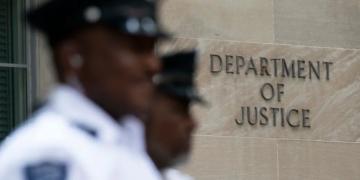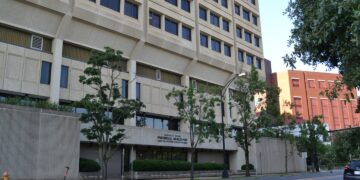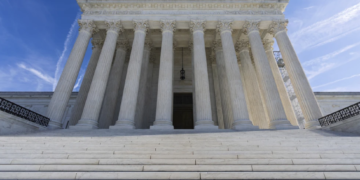A woman leaves a voting center on Tuesday, March 26, 2024, during early voting for the state’s presidential primary election in Freeport, N.Y. In Nassau County on Long Island, some Latino residents and a local civil rights organization claim that a redistricting map created by the county Legislature diminishes the voting power of Black, Latino, and Asian communities. (AP Photo/Eduardo Munoz Alvarez)
May 10, 2024 Story by: Publisher
Legal actions under New York’s recently enacted voting rights law shine a light on racial disenfranchisement, as exemplified by lawsuits targeting Nassau County’s political map, among others.
Weihua Yan’s observation of Nassau County’s evolving demographics spurred him into action. Despite a significant increase in the Asian American population, Yan noted a glaring absence of representation in the County Legislature. His bid for a seat, though unsuccessful, highlighted systemic challenges in electoral representation.
Critics attribute the disparity to a redistricting process perceived to favor the existing power structure, particularly under the county’s Republican-dominated Legislature. This sentiment prompted legal action, with lawsuits alleging the deliberate dilution of minority communities’ voting influence.
Nassau County’s demographic landscape, where whites constitute a minority yet dominate political representation, underscores the need for equitable electoral practices. While not directly involved in litigation, Yan and others advocate for fair representation reflective of the county’s diverse populace.
These lawsuits are part of a broader trend across New York, where the Voting Rights Act, enacted in response to nationwide voting restrictions, aims to safeguard electoral fairness. Contrary to the belief that racial voting discrimination is confined to specific regions, these legal challenges underscore its prevalence even in traditionally progressive states.
Although Nassau County’s history doesn’t fall under federal preclearance requirements, its legacy of racial segregation adds context to the current disputes. Disparities between affluent, predominantly white areas and diverse communities persist, reinforcing calls for inclusive political representation.
While defenders of the current political map assert compliance with the law and community input, plaintiffs argue otherwise. They contend that the map fragments minority communities or merges them with dissimilar ones, diminishing their political clout.
For instance, the lawsuit highlights the division of Freeport, a predominantly Latino and Black village, with predominantly white Merrick, undermining cohesive representation. Similar grievances extend to New Hyde Park, where Asian residents find their voting power diminished by redrawn boundaries. Source: Spectrumlocalnews.com
As legal battles unfold, stakeholders advocate not only for electoral reform but also for broader community empowerment. Rather than solely relying on litigation, they urge jurisdictions to address underlying inequalities by investing in minority communities’ infrastructure and resources.
The litigation under New York’s voting rights law serves as a catalyst for constructive dialogue and collaborative solutions, emphasizing the importance of inclusive governance for all citizens.
















